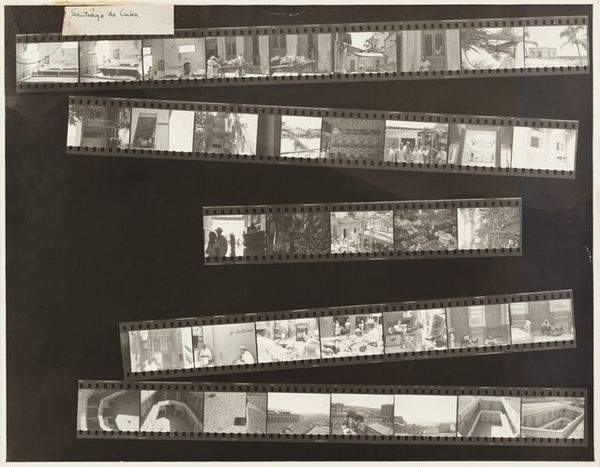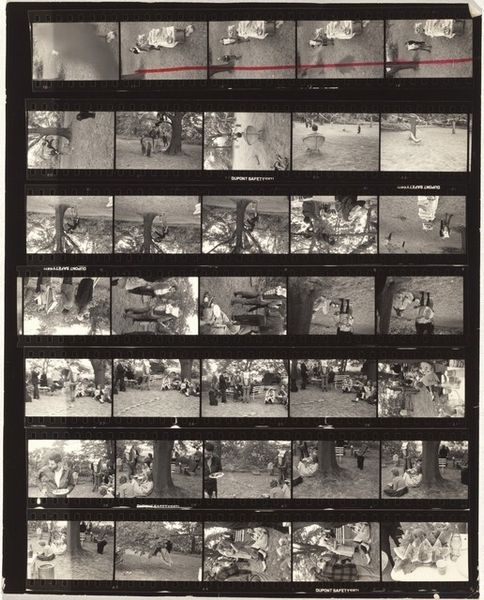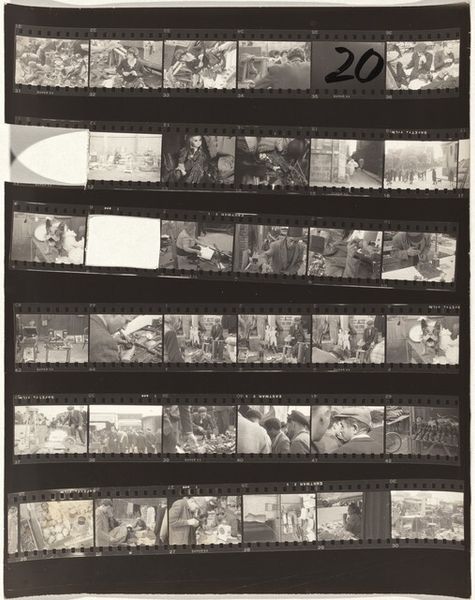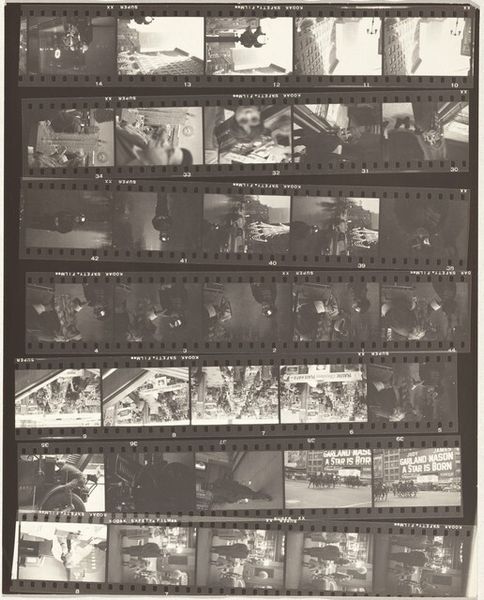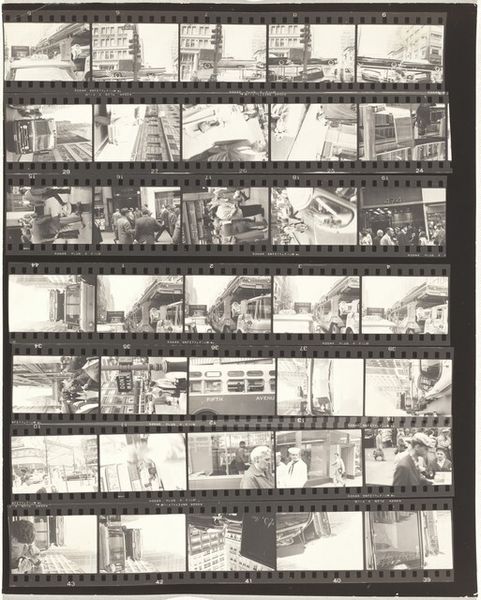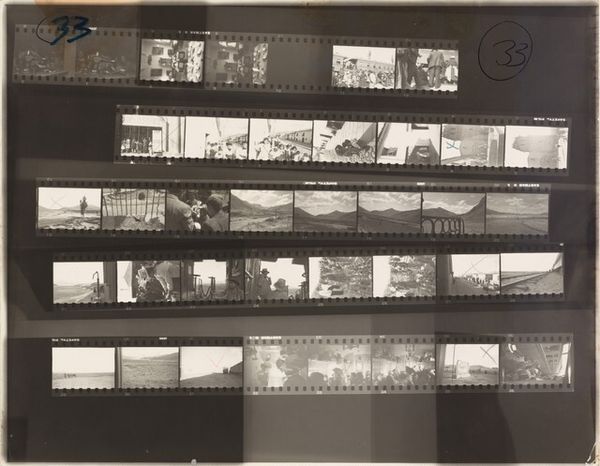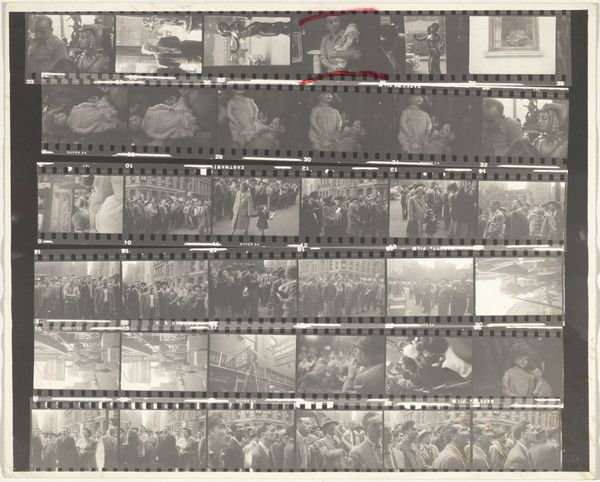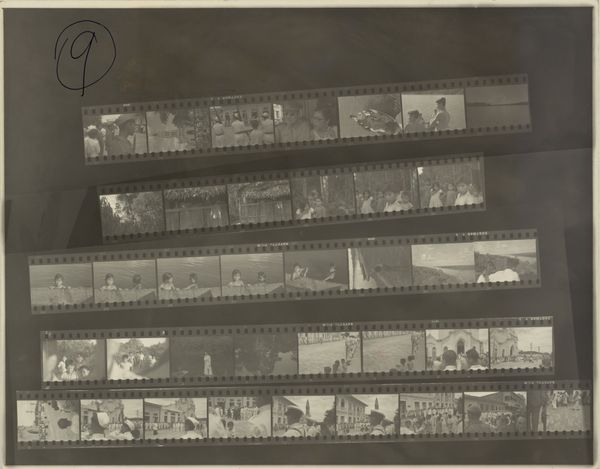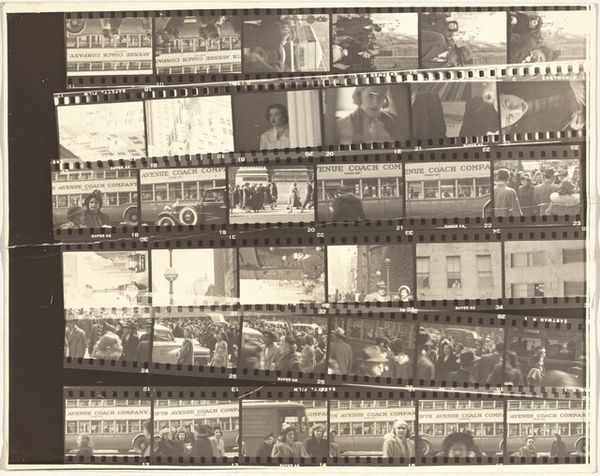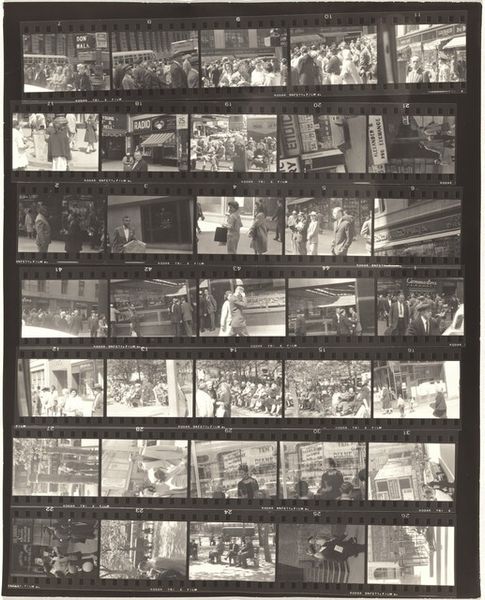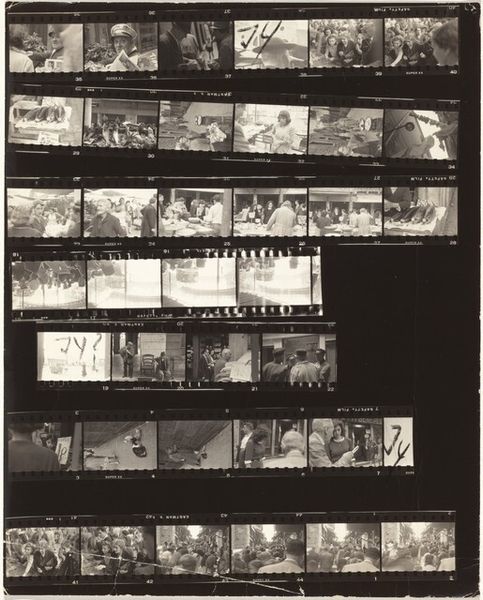
print, contact-print, photography, gelatin-silver-print
#
print photography
#
film photography
# print
#
landscape
#
contact-print
#
photography
#
gelatin-silver-print
#
realism
Dimensions: sheet: 27.8 x 35.4 cm (10 15/16 x 13 15/16 in.)
Copyright: National Gallery of Art: CC0 1.0
Editor: So, this is Robert Frank’s “Peru 27,” a gelatin silver print contact sheet from 1948. Looking at all these frames together, it gives the impression of a documentary film, like snippets of life captured one after another. How do you interpret this work within the context of its time? Curator: Well, Frank was working during a period of intense social and political change. Photography was being redefined as a tool for social commentary, and museums and galleries were just beginning to grapple with showcasing this type of work. The very nature of a contact sheet - usually a tool for editing - being presented as the artwork disrupts traditional notions of artistic presentation, wouldn’t you say? Editor: It definitely feels raw and unfiltered. What’s interesting is how he presents these slices of Peruvian life; everyday scenes, people working, landscapes… Were there specific photographic or social movements influencing this choice of subject matter? Curator: Absolutely. Consider the Farm Security Administration photographers in the US. They documented the hardships of the Depression, using photography to promote social reform. Frank, though, brings a European sensibility, perhaps more detached, observing rather than directly advocating. This work was made early in his career, foreshadowing the more critical, subjective style he’d later become known for. Do you find a particular narrative thread connecting these images? Editor: Not a clear one, no. Maybe that's the point? I was expecting something more polished or deliberate but am confronted by something that challenges how I should view these documentary scenes of 1940's Peru. Curator: Precisely. He makes us confront our own expectations of representation and artistic intent. And this raw format becomes an integral component to conveying his message about cultural representation. Editor: I never really thought of contact sheets as being worthy of the "art" label, but seeing this, the presentation becomes a key aspect of understanding the artwork as a whole. Curator: Right! Thinking about Frank's work and its influence is crucial, too; his break from formal perfection encouraged others to use photography in unconventional, powerful ways.
Comments
No comments
Be the first to comment and join the conversation on the ultimate creative platform.

